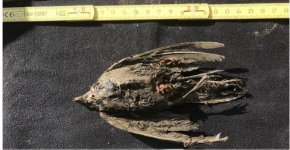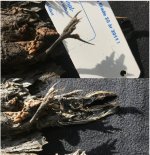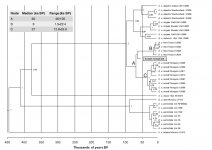RSN
Rafael S. Nascimento

Nicolas Dussex, David W. G. Stanton, Hanna Sigeman, Per G. P. Ericson, Jacquelyn Gill, Daniel C. Fisher, Albert V. Protopopov, Victoria L. Herridge, Valery Plotnikov, Bengt Hansson & Love Dalén
Biomolecular analyses reveal the age, sex and species identity of a near-intact Pleistocene bird carcass
Communications Biology volume 3, Article number: 84 (2020)
Abstract:
Ancient remains found in permafrost represent a rare opportunity to study past ecosystems. Here, we present an exceptionally well-preserved ancient bird carcass found in the Siberian permafrost, along with a radiocarbon date and a reconstruction of its complete mitochondrial genome. The carcass was radiocarbon dated to approximately 44–49 ka BP, and was genetically identified as a female horned lark. This is a species that usually inhabits open habitat, such as the steppe environment that existed in Siberia at the time. This near-intact carcass highlights the potential of permafrost remains for evolutionary studies that combine both morphology and ancient nucleic acids.
Full text:
https://www.nature.com/articles/s42003-020-0806-7
Biomolecular analyses reveal the age, sex and species identity of a near-intact Pleistocene bird carcass
Communications Biology volume 3, Article number: 84 (2020)
Abstract:
Ancient remains found in permafrost represent a rare opportunity to study past ecosystems. Here, we present an exceptionally well-preserved ancient bird carcass found in the Siberian permafrost, along with a radiocarbon date and a reconstruction of its complete mitochondrial genome. The carcass was radiocarbon dated to approximately 44–49 ka BP, and was genetically identified as a female horned lark. This is a species that usually inhabits open habitat, such as the steppe environment that existed in Siberia at the time. This near-intact carcass highlights the potential of permafrost remains for evolutionary studies that combine both morphology and ancient nucleic acids.
Full text:
https://www.nature.com/articles/s42003-020-0806-7








